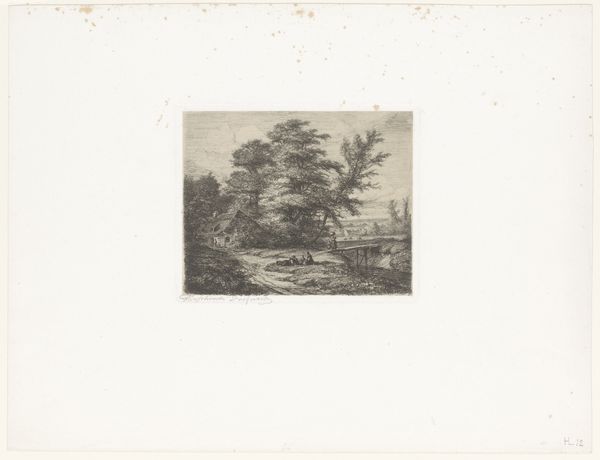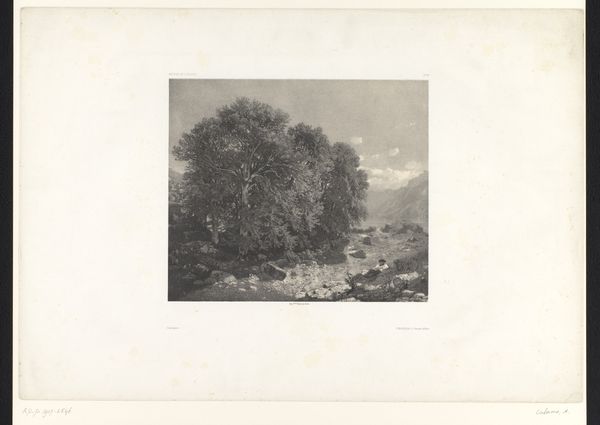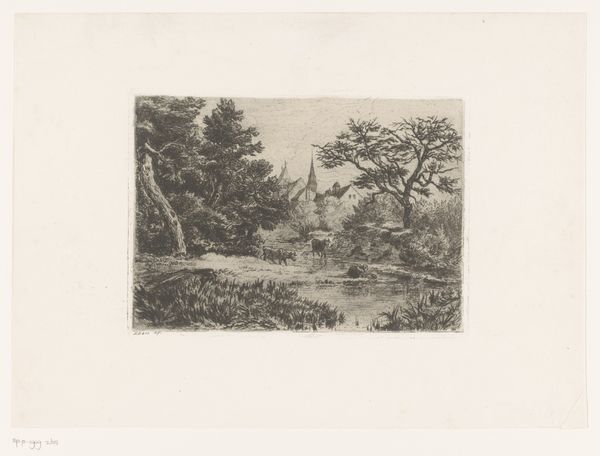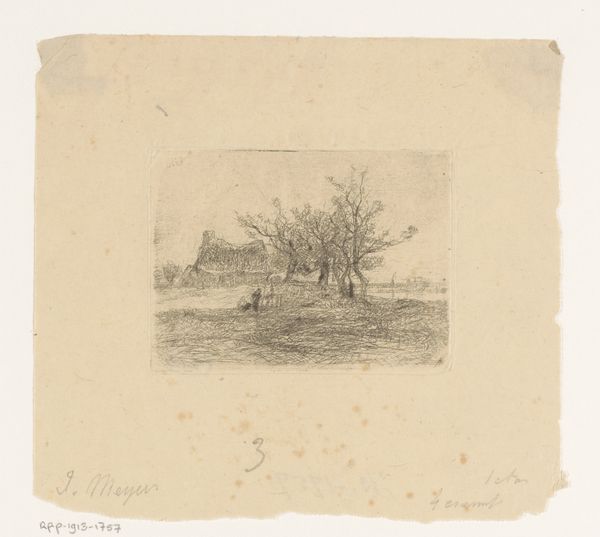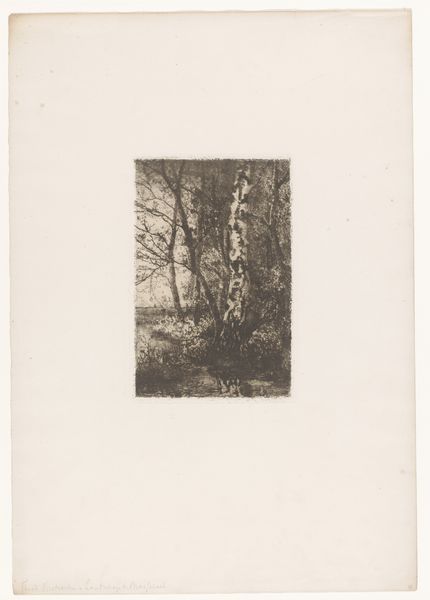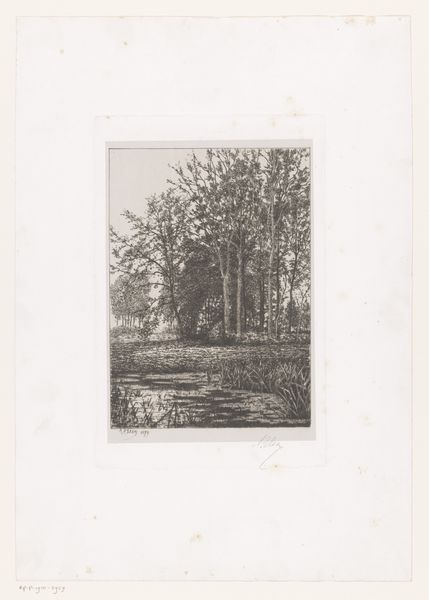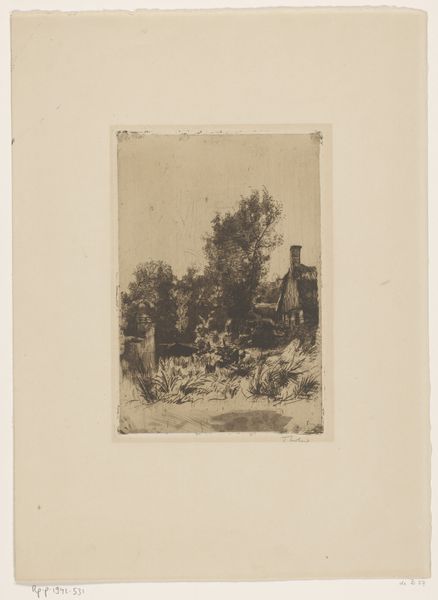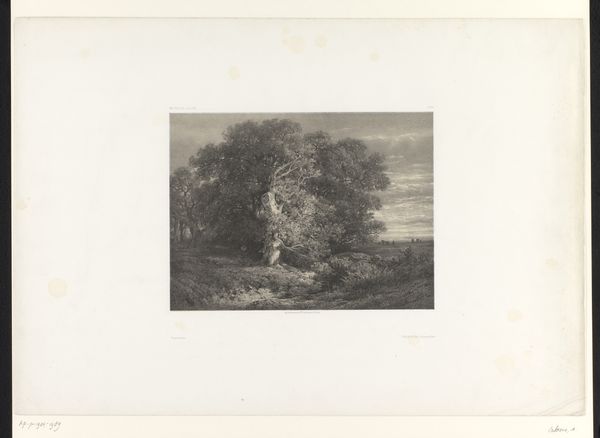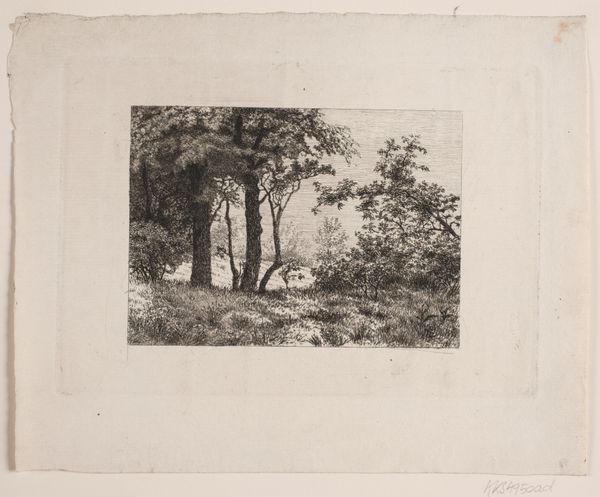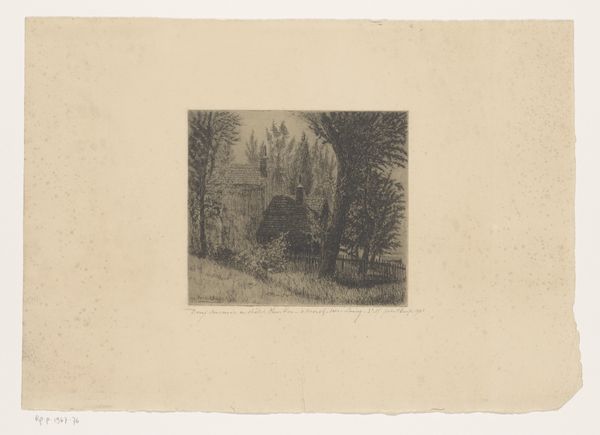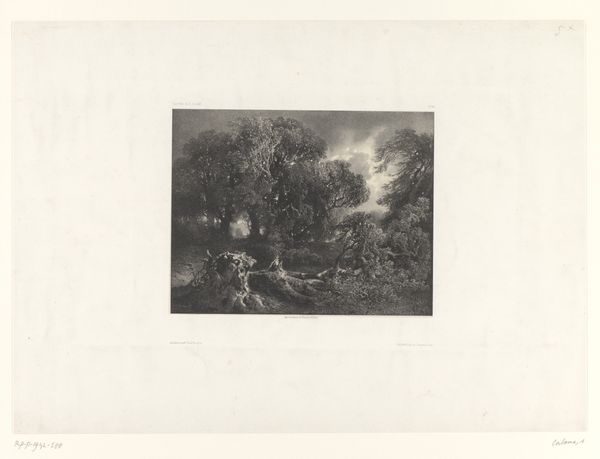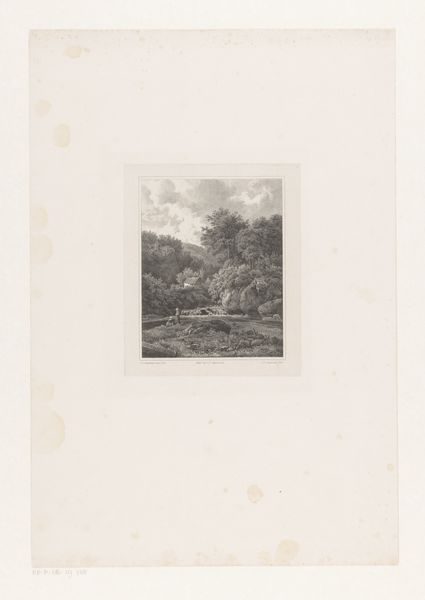![[Yosemite National Park, California] by Carleton E. Watkins](/_next/image?url=https%3A%2F%2Fd2w8kbdekdi1gv.cloudfront.net%2FeyJidWNrZXQiOiAiYXJ0ZXJhLWltYWdlcy1idWNrZXQiLCAia2V5IjogImFydHdvcmtzLzM3Zjk3NWQ0LWM1ZWMtNDU3ZS04NzVhLTJhMjdmNmZlZTM5MS8zN2Y5NzVkNC1jNWVjLTQ1N2UtODc1YS0yYTI3ZjZmZWUzOTFfZnVsbC5qcGciLCAiZWRpdHMiOiB7InJlc2l6ZSI6IHsid2lkdGgiOiAxOTIwLCAiaGVpZ2h0IjogMTkyMCwgImZpdCI6ICJpbnNpZGUifX19&w=3840&q=75)
Dimensions: Image: 12.5 x 12.5 cm (4 15/16 x 4 15/16 in.), circular Album page: 24 x 25.1 cm (9 7/16 x 9 7/8 in.)
Copyright: Public Domain
Editor: This is Carleton Watkins' photograph of Yosemite National Park, taken sometime between 1876 and 1880. I’m struck by how intimate the landscape feels, framed in this unusual circular format. How do you interpret Watkins’ choice to present Yosemite in this way? Curator: That circular framing is fascinating, isn’t it? I think it’s crucial to understanding the image in its historical context. We're not just looking at a landscape, but at a constructed idea of the American West. Watkins, along with other artists of the time, played a pivotal role in shaping the visual narrative of Yosemite as a pristine, untouched wilderness. But this idea, this 'wilderness,' conveniently erases the history and presence of indigenous peoples. Does the framing perhaps become a lens of control, where an artist like Watkins contains, markets and sells that narrative? Editor: That's a powerful point. So, you’re saying that framing the landscape this way almost participates in the act of dispossession? Curator: Precisely. These images became powerful tools in the push for westward expansion and resource extraction. The monumental scale of Yosemite was often used to symbolize American potential and Manifest Destiny, while simultaneously overshadowing the original inhabitants’ connection to the land. It is crucial to examine what the dominant narratives chose to make visible – and what they consciously obscured. Who got to frame this story of westward expansion? Editor: So it’s not just a pretty picture. It's embedded in layers of political and social history. It’s making me rethink my initial reaction. Curator: Exactly! By critically engaging with the art of the past, we can recognize these complexities and question the power dynamics that continue to shape our understanding of the world today. Editor: This has really opened my eyes to how a seemingly straightforward landscape photograph can be such a complex document. Curator: I'm glad we could look beneath the surface. Analyzing images such as this helps us develop critical tools, both intellectual and social.
Comments
No comments
Be the first to comment and join the conversation on the ultimate creative platform.
